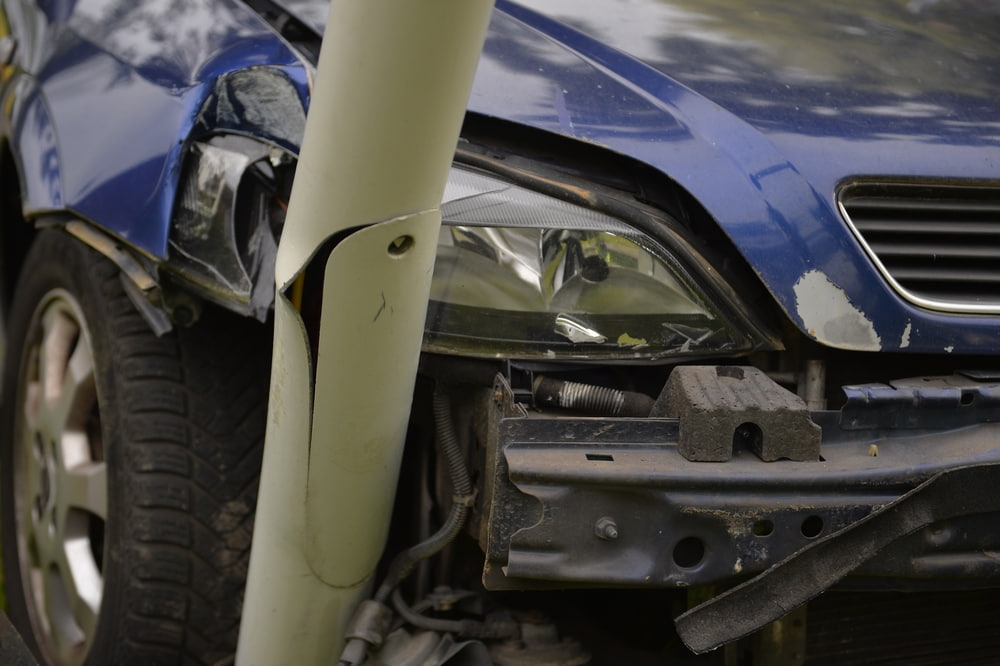Car accidents typically happen when other drivers violate the rules of the road or drive recklessly. Immediately after a car crash, it’s important that you exchange insurance information with all of the involved drivers and seek initial medical treatment for your injuries. You should also complete your medical care regimen, gather and retain documentation, and speak with an experienced car accident attorney in your area.
A knowledgeable car accident lawyer will promptly evaluate your claim and take the necessary legal steps to secure the compensation and justice you need.
What to Do After a Car Accident
These steps can help protect your rights and ensure you get the compensation you deserve:
- Get Medical Help
- Exchange Details
- Document Everything
- Follow Your Doctor’s Advice
- Notify Your Insurance
- Keep Records
- Avoid Social Media
- Talk to a Lawyer
How do Car Accidents Usually Happen?
Car accidents often result from the negligence of other drivers, who may fail to drive safely and responsibly. Here are some of the most common ways that driver negligence leads to car accidents:
- Distracted Driving – One of the leading causes of accidents is distracted driving. This includes activities like texting or talking on a cell phone, adjusting the radio, or eating while driving. When drivers are not fully focused on the road, they are less likely to notice traffic signals, road hazards, or other vehicles, increasing the risk of a collision.
- Speeding – Driving over the speed limit reduces a driver’s ability to react to sudden changes in traffic conditions. High speeds also increase the severity of accidents. Drivers who speed often cannot stop in time to avoid collisions or navigate turns safely, leading to crashes.
- Drunk or Drugged Driving – Driving under the influence of alcohol or drugs impairs judgment, reaction times, and coordination. This impairment makes it difficult for drivers to make safe decisions and respond to road conditions effectively, leading to dangerous driving behaviors and accidents.
- Reckless Driving – Reckless driving includes behaviors like tailgating, aggressive lane changes, and running red lights. Drivers who exhibit reckless behavior disregard traffic laws and safety regulations, putting themselves and others at risk of accidents.
- Fatigued Driving – Fatigue impairs a driver’s alertness and reaction times. Drivers who are drowsy may fall asleep at the wheel or struggle to stay focused, which can lead to accidents. Fatigued driving is particularly common among long-haul truck drivers and individuals who have not had adequate rest.
- Running Red Lights and Stop Signs – Ignoring traffic signals and stop signs can also lead to serious accidents. Drivers who run red lights or fail to stop at stop signs create dangerous intersections where collisions are likely to occur.
- Poor Weather Conditions – Failing to adjust one’s driving habits to match poor weather conditions (such as rain, snow, or fog) can also be a form of negligence. Drivers who do not reduce their speed or increase their following distance in adverse weather are more likely to cause serious accidents.
Steps to Take Following a Car Crash
Taking the right steps after leaving the scene of a car accident is crucial for protecting your rights and ensuring that you receive proper compensation for your injuries. Here’s a guide to the most important steps to follow:
- Continue Medical Care – Even if you feel fine immediately after the accident, continue with any recommended medical treatment. Some injuries, like whiplash or internal damage, may not become apparent until days or weeks later. Follow up with your primary care doctor or specialists as needed, attend all scheduled appointments, and follow your doctor’s advice for recovery. Keep detailed records of all medical visits, treatments, and expenses.
- Document Your Injuries and Recovery – Maintain a personal injury journal to track how the car accident affects your daily life. Document physical pain, emotional distress, and any limitations on your daily activities. This record can provide valuable insight into how the accident has affected your well-being and help support your claim.
- Gather and Preserve Evidence – Collect and organize all evidence related to the accident. This includes medical records, repair estimates for your vehicle, and receipts for any out-of-pocket expenses. If you have photographs from the accident scene or witness statements, keep these as well. This documentation will be essential when filing a claim or pursuing legal action.
- Notify Your Insurance Company – Report the accident to your insurance company as soon as possible. Provide them with accurate information about the accident and your injuries. Avoid admitting fault or making statements that may be used against you later. It’s also wise to consult with a lawyer before discussing the accident with the other party’s insurance company.
- Speak with an Experienced Car Accident Lawyer as Soon as Possible – Given the complexities of car accident claims – especially if there are serious injuries or significant damages – consider consulting with a knowledgeable personal injury lawyer. An attorney can help you navigate the legal process, negotiate with insurance companies, and ensure you receive fair compensation for your injuries and losses.
- Avoid Social Media – Be cautious about posting details of the accident or your recovery on social media. Insurance companies and other parties may monitor your online activity and use it to challenge your claim or minimize your compensation.
- Keep Records of Your Financial Losses – Track all financial losses resulting from the accident, including lost income, medical bills, and any other expenses. This information is crucial for calculating the total amount of compensation you may be entitled to receive.
Taking these steps seriously will help you manage the aftermath of a car accident effectively and ensure that you receive the compensation and support you need for your recovery.
Common Injuries in Car Crashes
Car accidents can lead to a variety of injuries, each requiring different types of medical treatment. Here are some of the most common injuries and the typical treatments for them:
- Whiplash – Whiplash occurs when a sudden collision causes the head and neck to jerk forward and backward rapidly. This can strain the muscles and ligaments in the neck. Common symptoms include neck pain, stiffness, and headaches. Treatment usually involves rest, pain relief medications, and physical therapy to improve neck mobility and strength.
- Broken Bones – Broken bones, or fractures, are also common in car accidents due to the force of the impact. Fractures can affect any bone, such as those in the arms, legs, or ribs. Treatment depends on the type and location of the fracture. It may involve casting or splinting the broken bone – and in some cases, surgery – to realign and fix the bones with plates, screws, or rods.
- Spinal Cord Injuries – Spinal cord injuries can occur when the spine becomes damaged during a crash. These injuries can range from minor nerve damage to severe cases that cause paralysis. Treatment often includes emergency surgery to stabilize the spine, followed by physical therapy and rehabilitation to maximize recovery and manage symptoms.
- Traumatic Brain Injuries (TBIs) – TBIs can result from a blow to the head or violent shaking. Symptoms may include headaches, confusion, memory loss, and, in severe cases, loss of consciousness. Treatment often involves hospitalization, where doctors may perform imaging tests to assess the damage. Depending on the severity, treatment can range from rest and medication to surgery and long-term rehabilitation.
- Internal Injuries – Internal injuries, such as damage to organs or internal bleeding, are also serious and can be life-threatening. These injuries may not be immediately obvious and may require emergency medical care. Treatment usually involves surgery to repair the damage and address any internal bleeding.
- Soft Tissue Injuries – These include injuries to muscles, tendons, and ligaments. Common types are sprains, strains, and contusions. Treatment often involves rest, ice, compression, and elevation (R.I.C.E.), along with physical therapy to restore function and alleviate pain.
- Cuts and Lacerations – Cuts and lacerations can vary in severity from minor to deep and may require stitches or other wound care. Treatment involves cleaning the wound, applying stitches if necessary, and monitoring for signs of infection.
In all of these cases, timely medical attention is crucial for effective treatment and recovery.
How Do You Prove Negligence in a Car Accident?
To prove negligence in a car accident, you must demonstrate four key legal elements: duty of care, breach of duty, causation, and damages. Here’s a breakdown of each element and how you can prove it:
- Duty of Care – The first step is to show that the driver at fault owed a legal duty of care. This means that all drivers have a responsibility to drive safely and follow traffic laws. Essentially, they must drive in a way that avoids causing harm to others on the road. You can prove this duty by showing that the driver was required to adhere to standard driving practices and laws, which everyone must follow to ensure road safety.
- Breach of Duty – Next, you need to prove that the driver breached this duty of care. A breach occurs when a driver fails to meet the expected standard of care. For example, if the driver was speeding, ran a red light, or was distracted while driving, these actions can be considered breaches. To prove a breach, you would use evidence such as witness statements, traffic camera footage, or police reports that show the driver was behaving recklessly or violating traffic laws at the time of the accident.
- Causation – The third element is causation. You must demonstrate that the driver’s breach of duty directly caused the accident and your injuries. This means showing a clear link between the driver’s unsafe behavior and the crash. For instance, if the driver’s speeding led to them losing control of the vehicle and hitting your car, you need to provide evidence that this speed was the direct cause of the accident. Medical records, accident reports, and expert testimony can help establish this connection.
- Damages – Finally, you need to prove that you suffered damages as a result of the accident. Damages refer to the losses you experienced, including medical expenses, property damage, lost income, and pain and suffering. You can prove damages by providing documentation such as medical bills, repair estimates, and records of lost income. Personal statements and testimony about how the accident has affected your life can also support your claim for damages.
How Much Compensation Can You Recover in a Car Accident Case?
Several factors influence the compensation you can recover in a car accident case:
- Severity of Injuries – The severity of your injuries plays a crucial role in determining compensation. Serious injuries, such as traumatic brain injuries, spinal cord damage, or multiple fractures, typically result in higher compensation because they require extensive medical treatment, often involve long-term or permanent disability, and affect your quality of life. The more severe the injury, the greater the compensation you are likely to receive for medical expenses, lost income, and pain and suffering.
- Medical Expenses – The cost of medical treatment is a significant factor in calculating compensation. This includes expenses for hospital stays, surgeries, physical therapy, and any ongoing medical care you may require. Detailed records and receipts of your medical expenses are essential in supporting your claim. Future medical costs, especially for long-term or permanent injuries, are also considered in the compensation calculation.
- Effect on Earning Capacity – If the accident has affected your ability to work, either temporarily or permanently, it will influence the compensation amount you receive. This includes lost income for the time you could not work and potential future earnings if you cannot return to your previous job or need to switch careers. Compensation may also cover vocational rehabilitation (if required) to help you adapt to new employment opportunities.
- Pain and Suffering – Non-economic damages such as pain and suffering, emotional distress, and loss of enjoyment of life are subjective but can significantly affect your total compensation amount. This includes how the accident has affected your mental and emotional well-being and your overall quality of life. Expert testimony from medical professionals and detailed personal accounts can help quantify these damages.
- Insurance Policy Limits – The insurance policies of the at-fault driver and any other liable parties can limit the compensation you can recover. Understanding the policy limits and whether multiple policies apply can affect the total compensation available for your claim.
Considering these factors and gathering comprehensive evidence will help in assessing and securing fair compensation for your car accident case.
Contact an Experienced Car Accident Lawyer Today

If you recently sustained injuries in a car accident due to someone else’s negligence, a knowledgeable car accident attorney in your area can be an invaluable help. Your lawyer can guide you through every step of the process, investigate your accident circumstances, file a claim on your behalf, and negotiate with the insurance company. If the insurance company adjuster refuses to compensate you fairly, your attorney can pursue a favorable litigation result in the court system on your behalf.

